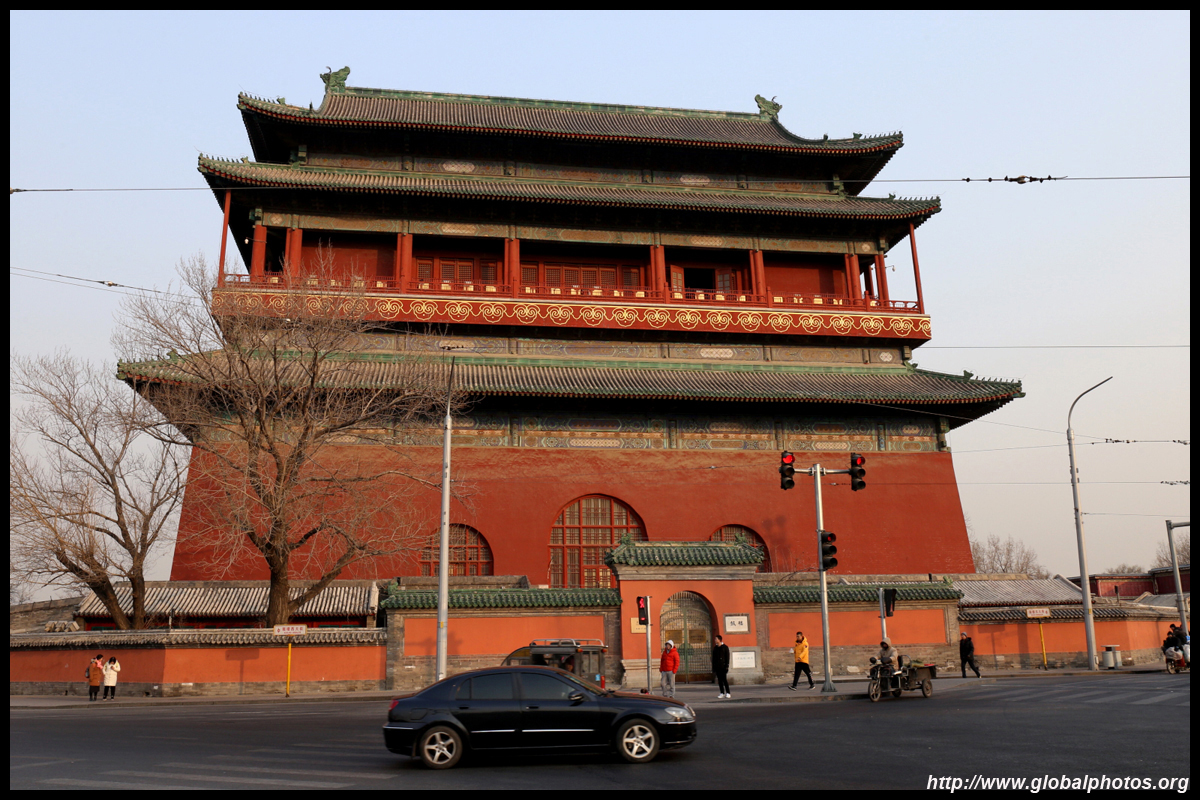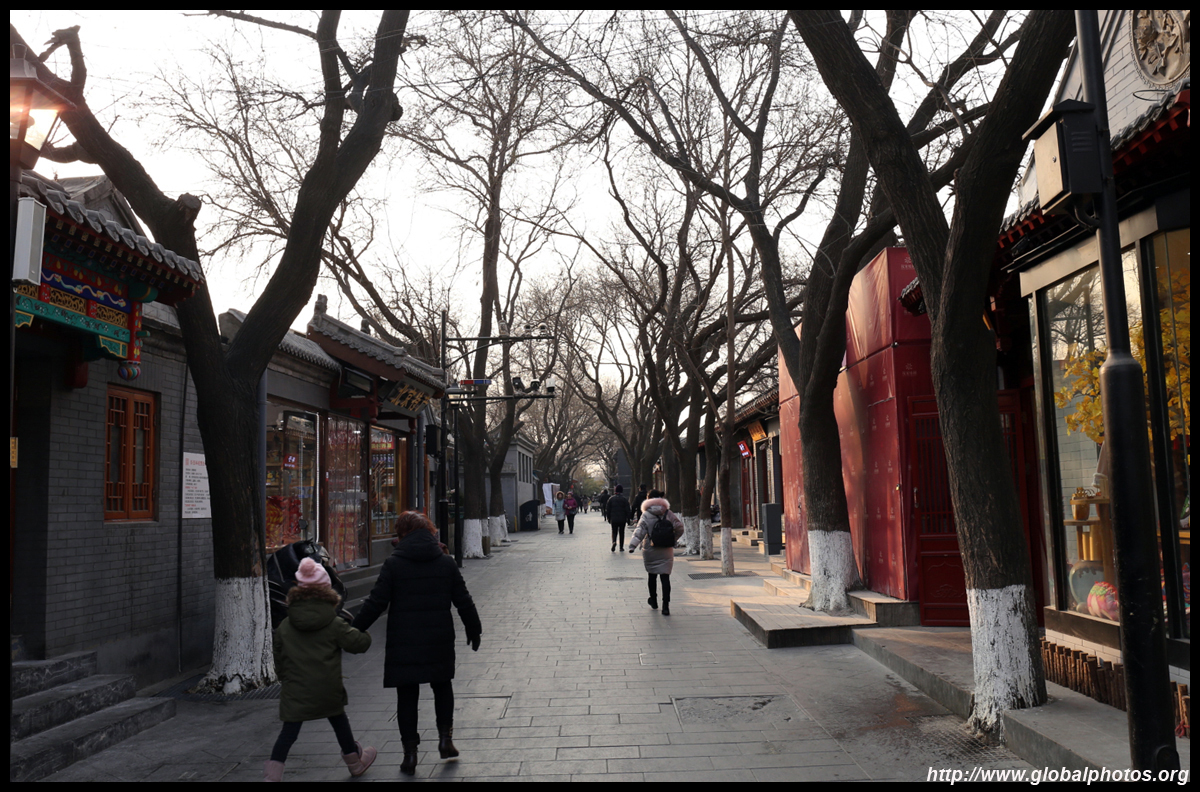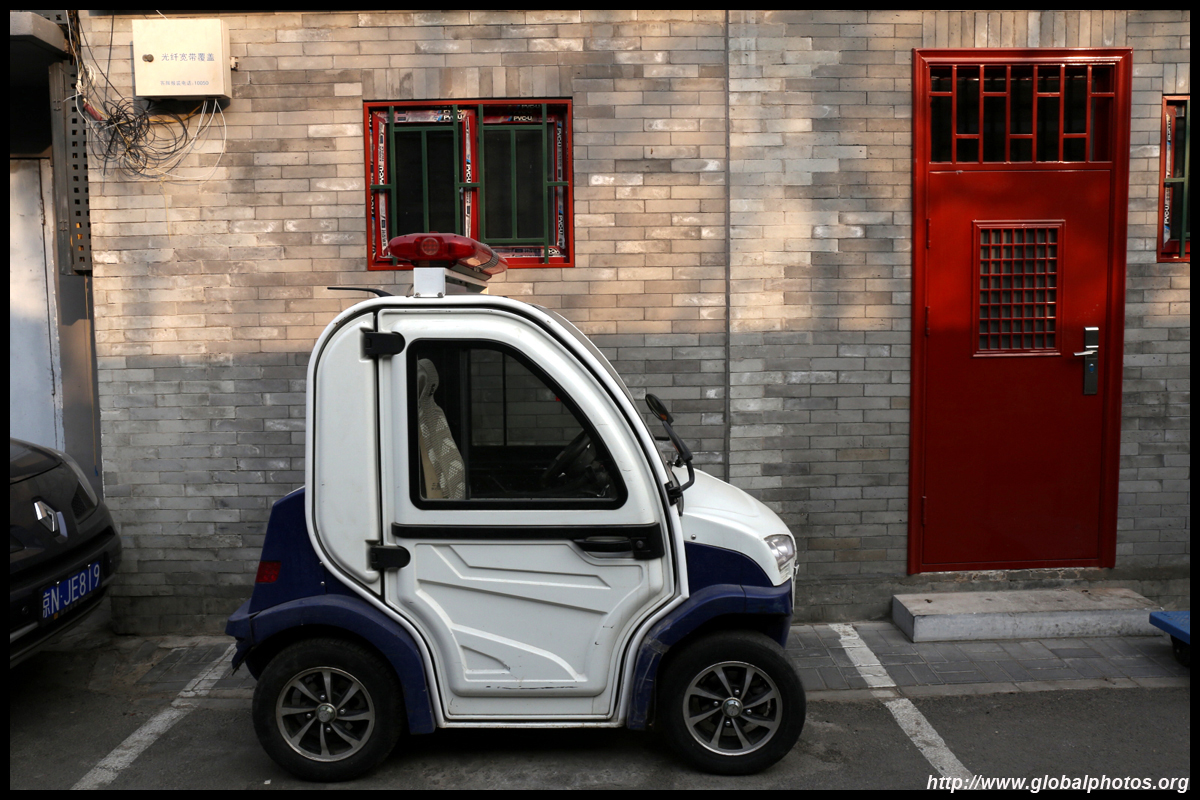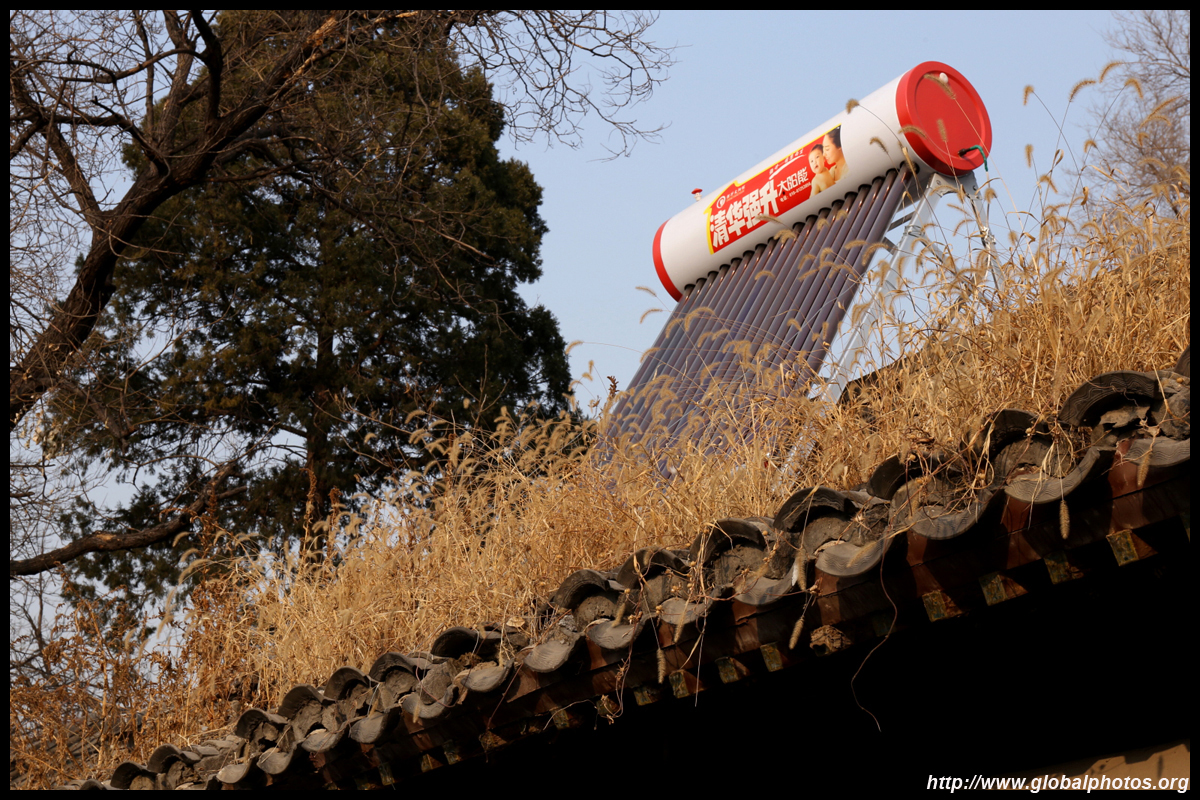Beijing Photo Gallery - Hutong
|
|||
Many neighbouring side streets around the Drum and Bell Towers have traditional hutongs. Some have been renovated into shops and restaurants, while others retain their residential use. With more and more tourists exploring these areas, signs forbidding tourist entry are increasingly common.
| |||

|

|

|

|

|

|

|

|

|

|

|

|

|

|

|

|
| |||

|

|

|

|

|

|

|

|

|

|

|

|

|

|

|

|
The Drum Tower was originally built in 1272 and rebuilt several times since then. Today's structure dates from the late 1800s. While its timekeeping function ended in 1924, it is now open to the public as a tourist attraction.
Only one side's balcony is open for views.
Just to the north is the grey Bell Tower, which also had a timekeeping function until 1924. The 60-ton bell was once sounded with the drums for morning and night.
| |||

|

|

|

|

|

|

|

|

|

|

|

|

|

|

|

|
Heading east from the Drum Tower, the Guloudajie is a wide and leafy street with many shops. Continue for a few blocks to Nanluogu Xiang.
| |||

|

|

|

|

|

|

|

|

|

|
||
Nanluogu Xiang is a renovated hutong whose main street has been pedestrianized. Full of cafes and restaurants, the more authentic hutong scenes are along the east-west alleys off the main stretch
| |||

|

|

|

|

|

|

|

|

|

|

|

|

|

|

|

|
| |||

|

|

|

|

|

|

|

|

|

|

|

|

|

|

|

|
| |||

|

|

|

|

|

|

|

|

|

|

|

|

|

|

|

|
A few metro stops away, Lingjing Hutong to the west of the Forbidden City is famous for having the widest alley at just over 32m. Redevelopment is slowly approaching, and the area has not been flooded with shops, cafes, and tourists.
| |||

|

|

|

|

|

|

|

|

|

|

|

|

|

|

|

|
| |||

|

|

|

|

|

|

|

|

|

|

|

|

|

|

|

|
| |||

|

|

|

|

|

|

|

|

|

|
||
|
To re-use these photos or notify of errors, please email me. Thank you.
|
|||












































